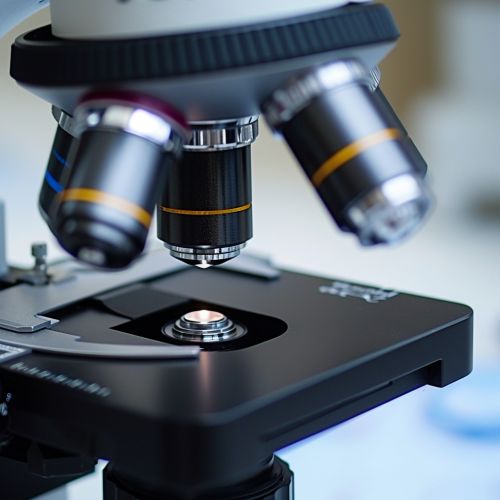Microscope Objective
Introduction
A microscope objective is a critical component of a microscope that gathers light from the specimen being observed and focuses the light rays to produce a real image. The objective lens is the first optical element that light encounters as it leaves the specimen. The quality and design of the objective lens significantly influence the final image's resolution, contrast, and color accuracy.
Design and Function
Microscope objectives are designed to collect light from a small area of the specimen and focus it into the microscope's tube. The objective is a complex assembly of several lens elements that work together to correct for various optical aberrations. The design of the objective lens determines the numerical aperture (NA), which is a measure of its light-gathering ability, and the working distance (WD), which is the distance between the front lens element and the specimen when the specimen is in focus.
Types of Objectives
There are several types of microscope objectives, each designed for specific applications and offering different performance characteristics. These include achromatic, fluorite, and apochromatic objectives. Achromatic objectives are the most common and least expensive. They correct for two wavelengths of light in the red and blue regions of the spectrum. Fluorite objectives correct for more colors and have a higher resolution and contrast than achromatic objectives. Apochromatic objectives offer the highest performance, correcting for three wavelengths and providing the best color accuracy.
Construction and Materials
The construction of a microscope objective involves precise manufacturing and assembly of multiple lens elements. These elements are typically made from high-quality optical glass or synthetic crystals, such as fluorite or sapphire, to minimize optical aberrations. The lens elements are mounted in a metal housing that provides mechanical stability and allows for precise adjustment of the lens position.
Use and Maintenance
Proper use and maintenance of microscope objectives are essential to ensure their performance and longevity. This includes cleaning the lenses regularly to remove dust and oil, avoiding touching the lens surfaces, and storing the objectives in a dry, dust-free environment. It is also important to use the correct immersion oil with oil immersion objectives to prevent damage to the lens and maintain image quality.
Impact on Microscopy
The development and improvement of microscope objectives have had a significant impact on the field of microscopy. High-quality objectives have enabled researchers to observe specimens at higher resolutions and with greater contrast, leading to advances in fields such as cell biology, microbiology, and material science.


